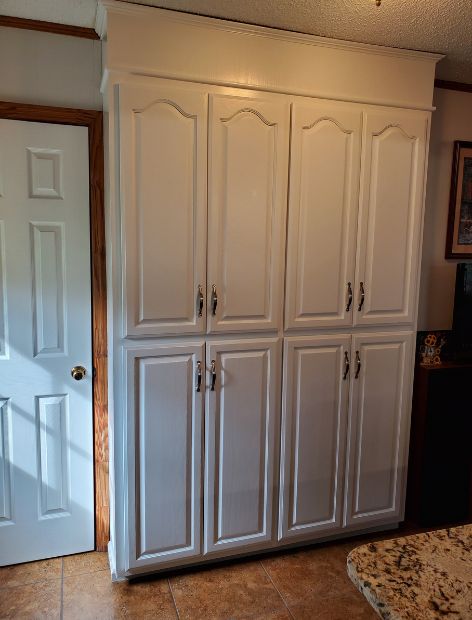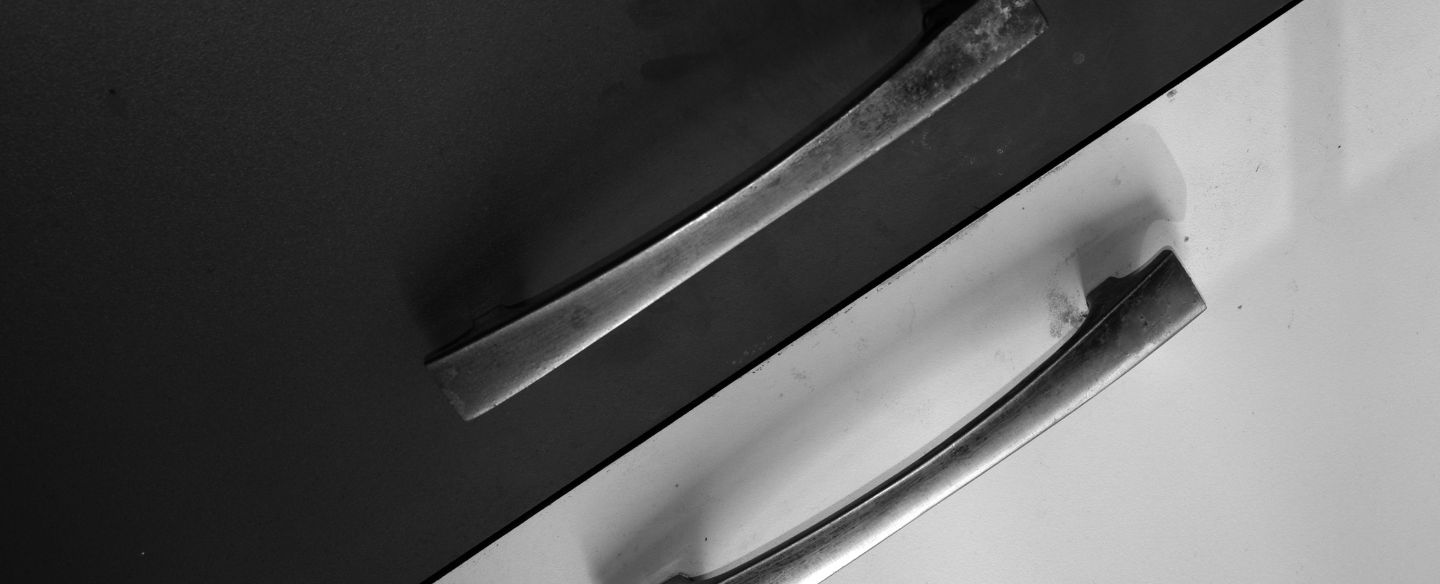We Offer Free Estimates
Staying In Home
Staying In Home
If you are planning on staying in your home and good quality and longevity are crucial, then you have several options.
But first, ask yourself a couple of questions:
- Are the quality of your cabinets worth refinishing? (I can help you with that).
- And is the layout of your kitchen optimal and working for you? (I can help you with that too).
- Frequently the layout is restricted by the room size and the location of doors and windows.
- There are several ways I can show you how you can squeeze more storage into your existing space and make it more functional.
Your options include: (The price increases as you descend.)
If the old finish is too worn, or you want a newer look, then “painting” your cabinets could be a good option. A dramatic effect can be achieved for much less than the cost of replacement.
I don’t use traditional paint, but a solid-color lacquer finish that is sprayed on that has the appearance of color but is much more durable, especially around pulls and knobs.
I don’t recommend traditional paints for several reasons, such as:
- Waterborne paints have come a long way in the past decade but are still not very durable. The main problems are the oils from our skin chemically reacting to the paint, causing it to break down fairly quickly, especially around pulls and knobs.
- Oil-based paints don’t have this problem because they are “oil-based.” But they are challenging to apply and clean up. It takes hours for it to dry, and unless you don’t have any dust floating around in your house, you will end up with “stuff” stuck in that finish. Also, oil-based paints have a strong odor that can linger for days.
- Both kinds will show roller dimpling and brush marks unless it is sprayed (more about sprayed finishes later).

Lacquer finishes have been the industry standard for many years. That is probably what is on your cabinets now. Lacquer is easy to clean and durable. It holds up to most household cleaners and is resistant to wear.
I have been refinishing cabinets using lacquer for over thirty years. I have hundreds and hundreds of kitchens I have refinished with lacquer.
New cabinetry has recently moved to a catalyzed varnish instead of lacquer. It has its advantages on new cabinetry, but refinishing existing cabinets, I have run into issues, such as:
- It doesn’t stick well to some older finishes.
- Kitchens that have been in use often have contaminants that prevent this finish from laying down properly.
- Even in a spray booth, it attracts dust, even worse in houses.


